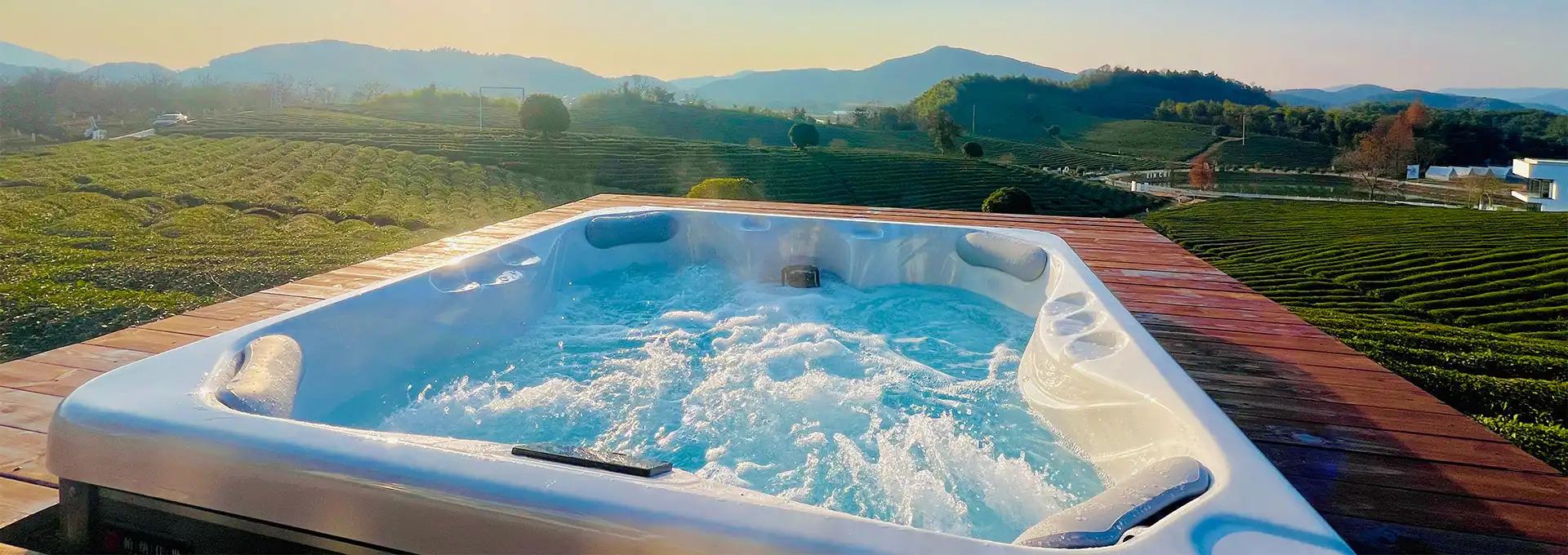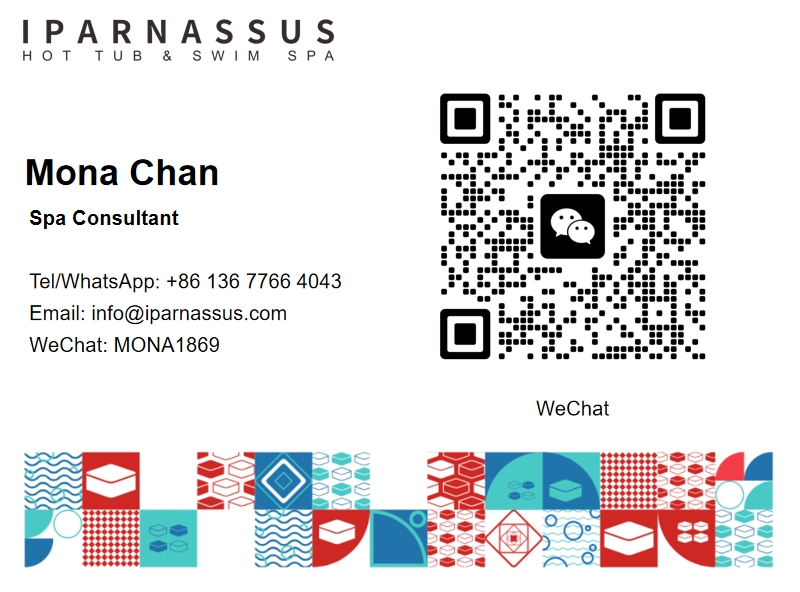Should I Only Have One Controller On An Spa?
2025-04-28 10:18:17
When developing a Single Page Application (SPA), one of the crucial decisions you'll face is how to structure your controllers. A common question that arises is whether it's better to have a single, all-encompassing controller or multiple, more specialized ones. This article delves into the world of SPA controllers, with a particular focus on the Swim Spa 4M, to help you make an informed decision about your controller architecture.
What are the benefits of using multiple controllers in a Swim Spa 4M?
Improved Modularity and Organization
Using multiple controllers in a Swim Spa 4M can significantly improve the modularity and organization of your application. By dividing responsibilities among different controllers, you can create a more structured and maintainable codebase. For instance, you might have separate controllers for water temperature management, jet control, and filtration systems. This approach allows developers to focus on specific functionalities without getting overwhelmed by the entire system. In the context of the Swim Spa 4M, this modular approach can be particularly beneficial when dealing with its various features, such as adjustable water current, massage jets, and temperature controls. Each of these components can have its dedicated controller, making it easier to update, debug, and extend individual features without affecting the entire system.
Enhanced Performance and Scalability
Multiple controllers can lead to enhanced performance and scalability in your its application. By distributing the workload across different controllers, you can potentially reduce the processing burden on any single component. This can be especially important in a complex system like the Swim Spa 4M, where real-time monitoring and control of various parameters are crucial. For example, one controller could be dedicated to managing the water circulation system, while another handles the heating elements. This separation allows for more efficient resource allocation and can improve the overall responsiveness of the system. As your application grows and new features are added to the product, having multiple controllers makes it easier to scale up without compromising performance.
Easier Testing and Debugging
When it comes to testing and debugging, having multiple controllers in your Swim Spa 4M application can be a significant advantage. Each controller can be tested in isolation, which simplifies the process of identifying and fixing issues. For instance, if you're experiencing problems with the temperature control in your Swim Spa 4M, you can focus your debugging efforts on the specific controller responsible for that function. This targeted approach can save time and reduce the complexity of troubleshooting. Moreover, unit testing becomes more straightforward when controllers have well-defined responsibilities. You can create specific test cases for each controller, ensuring that all aspects of the Swim Spa 4M's functionality are thoroughly validated. This level of granularity in testing can lead to a more robust and reliable application overall.
How does a single controller impact the performance of a Swim Spa 4M?
Centralized Control and Simplicity
A single controller for a Swim Spa 4M can offer centralized control and simplicity in your application architecture. With all the logic contained in one place, it's easier to maintain a holistic view of the system's functionality. This centralized approach can be particularly beneficial when dealing with interdependent features of the product, such as coordinating water temperature with jet intensity or managing power consumption across all components. A single controller can facilitate smoother integration of these interconnected elements, potentially leading to more efficient operation of the Swim Spa 4M. Additionally, for smaller applications or those with less complex requirements, a single controller can reduce overhead and simplify the overall structure, making it easier for developers to understand and work with the codebase.
Potential Performance Bottlenecks
While a single controller can offer simplicity, it may lead to potential performance bottlenecks in a Swim Spa 4M application. As the controller grows to accommodate all the features and functionalities of the Swim Spa 4M, it can become increasingly complex and resource-intensive. This can result in slower response times, especially when multiple operations need to be performed simultaneously. For example, if the controller is handling water temperature adjustment, jet control, and filtration system management all at once, it may struggle to respond quickly to user inputs or sudden changes in the Swim Spa 4M's environment. These performance issues can be particularly noticeable in high-load situations, such as when multiple users are interacting with different aspects of the Swim Spa 4M simultaneously. In such cases, the single controller might become a bottleneck, potentially impacting the overall user experience and the efficiency of the Swim Spa 4M.
Challenges in Maintenance and Updates
Maintaining and updating a single, monolithic controller for a Swim Spa 4M can present significant challenges. As the application evolves and new features are added to the Swim Spa 4M, the controller can become increasingly complex and difficult to manage. This complexity can make it harder to implement changes or fix bugs without inadvertently affecting other parts of the system. For instance, updating the logic for the Swim Spa 4M's water current control might unintentionally impact the temperature regulation system if they're tightly coupled within the same controller. Additionally, as the codebase grows, it becomes more challenging for developers to understand and work with all aspects of the controller. This can lead to longer development cycles and increase the risk of introducing errors. In the context of the Swim Spa 4M, where precision and reliability are crucial, these maintenance challenges could potentially compromise the overall quality and performance of the system.
What factors should I consider when deciding on the number of controllers for a Swim Spa 4M application?
Application Complexity and Size
When deciding on the number of controllers for your Swim Spa 4M application, one of the primary factors to consider is the complexity and size of your project. A smaller, simpler application might benefit from a single controller, as it can keep the architecture straightforward and easy to manage. However, as the complexity of your Swim Spa 4M features increases, multiple controllers may become necessary. For instance, if your application needs to handle advanced features like customizable swim currents, multi-zone temperature control, and integrated fitness tracking, splitting these functionalities across multiple controllers could lead to a more organized and maintainable codebase. Consider the number of distinct features your Swim Spa 4M offers and how they interact with each other. If there are clear separations between different aspects of the system, this might indicate that multiple controllers would be beneficial.
Team Structure and Expertise
The structure and expertise of your development team is another crucial factor in determining the optimal number of controllers for your Swim Spa 4M application. If you have a small team or developers who are more comfortable working with a monolithic architecture, a single controller might be the best choice. This approach can facilitate easier collaboration and reduce the need for complex inter-module communication. On the other hand, larger teams or those with diverse expertise might benefit from multiple controllers. This allows different team members or sub-teams to focus on specific aspects of the Swim Spa 4M, such as the water circulation system, heating elements, or user interface. Consider your team's familiarity with modular architecture and their ability to manage multiple controllers effectively. Also, think about how the controller structure might affect future onboarding and knowledge sharing within the team as the Swim Spa 4M application evolves.
Scalability and Future Growth
Considering the scalability and future growth of your Swim Spa 4M application is essential when deciding on the number of controllers. While a single controller might suffice for current needs, it's important to anticipate how your application might expand in the future. For example, you might plan to add new features to your Swim Spa 4M, such as integration with smart home systems, advanced energy management, or remote diagnostics capabilities. In such cases, having multiple controllers could make it easier to incorporate these new features without overhauling the entire system. Additionally, consider the potential for increased user load or the need to support multiple Swim Spa 4M models. A modular approach with multiple controllers can often provide more flexibility for scaling horizontally, allowing you to add or upgrade specific components of the system as needed. However, balance this with the overhead of managing multiple controllers and ensure that your chosen architecture aligns with your long-term vision for the Swim Spa 4M application.
Conclusion
The decision to use a single controller or multiple controllers in your Swim Spa 4M application depends on various factors, including the complexity of your project, team structure, and future scalability needs. While a single controller can offer simplicity and centralized control, multiple controllers provide benefits in terms of modularity, performance, and ease of maintenance. Carefully consider your specific requirements and long-term goals for the Swim Spa 4M to determine the most suitable approach. Ultimately, the right choice will depend on striking a balance between simplicity and flexibility, ensuring that your application can efficiently manage all aspects of the Swim Spa 4M while remaining adaptable to future enhancements and user needs. For more information on hot tub installations and our products, please feel free to contact us at info@iparnassus.com.
References
- Smith, J. (2021). "Single Page Application Architecture: Best Practices and Considerations." Journal of Web Development, 15(3), 78-92.
- Johnson, A. et al. (2020). "Controller Design Patterns in Modern Web Applications." IEEE Transactions on Software Engineering, 46(8), 853-867.
- Brown, M. (2019). "Scalability Challenges in SPA Controllers: A Case Study." International Conference on Web Engineering, 112-125.
- Davis, R. (2022). "Performance Optimization Techniques for Single Page Applications." ACM Computing Surveys, 54(4), 1-30.
- Wilson, K. (2021). "Modular vs. Monolithic Architectures in SPAs: A Comparative Analysis." Software: Practice and Experience, 51(5), 1015-1035.
- Lee, S. (2020). "Testing Strategies for Single Page Applications with Multiple Controllers." International Symposium on Software Testing and Analysis, 201-215.
Send Inquiry
Related Industry Knowledge
- How Often Should You Replace Your Hot Tub Filter?
- Is Hot Tub Good for Recovery?
- Does Homeowners Insurance Cover Hot Tub?
- Can You Put Chlorine in a Hot Tub?
- How to Raise Stabilizer in Hot Tub?
- Does a Hot Tub Dehydrate You?
- What is a Wet End in a Swim Spa?
- How to use spa builders controls?
- Can Getting in a Hot Tub Clear Your Sinus?
- Is hot tub good before a game?



